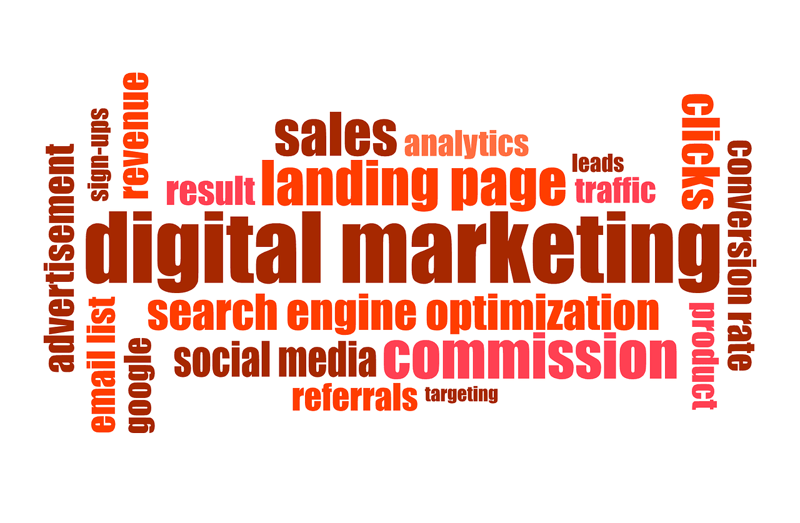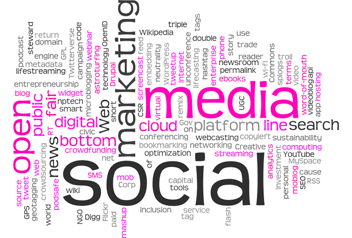De ce este importantă o strategie de Inbound Marketing?
Internetul marketingului a fost inundat de articole care vorbesc despre modul în care "inbound marketing", "outbound marketing" și "content marketing" sunt următorul lucru MARE - atât de mult încât devine confuz chiar și pentru noi. Explozia de noi termeni, tactici și tehnici de marketing poate fi copleșitoare - înțelegem. La urma urmei, m ulți oameni aderă la ideea că marketingul este marketing, nu-i așa?
Ei bine, nu. Nu mai este atât de simplu. Ne vom uita la inbound marketing (dar iată mai multe despre outbound marketing și content marketing dacă vă interesează!). Iată de ce suntem atât de mari susținători ai inbound marketing și ai utilizării sale de către aproape orice companie din orice industrie.
Ora definiției: Inbound Marketing
Deci, ce este Inbound Marketing și cu ce se deosebește? Liderul de piață Hubspot a inventat sintagma inbound marketing pentru a descrie tactica în creștere de a utiliza conținutul pentru a atrage, a angaja și a încânta clienții (existenți și potențiali deopotrivă) pentru a vă dezvolta afacerea. "Inbound" a fost folosit pentru a contracara ceea ce Hubspot numește "outbound marketing", sau marketingul tradițional, în care un brand forțează publicul să primească informații și argumente de vânzare.
Marketingul inbound generează de 3 ori mai mulți clienți potențiali decât marketingul outbound.
Inbound marketing oferă o contrapondere la acest lucru, prin care vă străduiți să atrageți clienții către marca dvs. prin furnizarea de conținut captivant, informativ și extrem de relevant pe blogul dvs., pe rețelele sociale și în alte locuri de pe web. Metodologia inbound combină mai multe tipuri de media pe mai multe canale pentru a transmite mesajul brandului dvs., pentru a crește gradul de conștientizare și pentru a oferi soluții la punctele dureroase pe care clienții dvs. sunt cunoscuți că le au - toate acestea construind în același timp încrederea în brandul dvs. ca sursă de informații excelente.
În ceea ce privește marketingul de conținut, acesta este subsetul inbound care acoperă modul de a produce articole excepționale și relevante pe blog și actualizări pe rețelele sociale.
Câteva exemple de tactici utilizate în călătoria clientului în inbound marketing (toate acestea sunt acoperite în programul Hubspot Certified Inbound Marketer oferit prin Hubspot Academy - Marketing Skills):
Faza de atragere
-
Anunțuri plătite: Trecând din lumea marketingului tradițional, anunțurile plătite sunt încă o piesă esențială a unei campanii de inbound marketing. Ceea ce diferă este conținutul acestor anunțuri; ele nu sunt argumente de vânzare în sine; în schimb, ele oferă informații și un CTA pentru a afla mai multe făcând clic pe o pagină de destinație plină de informații suplimentare.
-
Videoclipuri: Mărturiile arată că oamenii au mai multă încredere în alte persoane decât în corporații, iar modul de utilizare ghidat poate arăta cât de ușor este să folosești produsul tău pentru a rezolva probleme.
-
SEO: Optimizarea părții din spate a paginilor site-ului dvs. web contribuie la aducerea traficului organic de la motoarele de căutare și vă poate ajuta să vă propulsați în partea de sus a SERP (paginile cu rezultatele motoarelor de căutare).
-
Bloguri/ postări în rețelele sociale: Acestea cuprind aspectul de conținut al inbound, produs pentru a oferi informații relevante cititorilor dumneavoastră. Acest lucru generează încredere și recunoștință atunci când aceștia pot utiliza aceste informații pentru a rezolva problemele existente, ceea ce duce la disponibilitatea lor de a se converti în clienți plătitori atunci când este cazul.

Faza de implicare
-
Buletine informative prin e-mail: Odată ce cititorii au găsit util conținutul dvs., sunt adesea pregătiți să vă ofere datele de contact pentru a se abona la buletinul dvs. informativ. Puteți utiliza acest canal pentru a transmite mai multe povești despre brand, știri din industrie, actualizări ale companiei și oferte exclusive.
-
Chatbots: Odată ce cititorii se uită în jurul site-ului dvs., ei vor dezvolta în mod inevitabil întrebări. Având un chatbot programat să se ocupe de sarcinile de bază ale întrebărilor frecvente, îi eliberează pe membrii echipei dvs. să se ocupe de chestiuni mai presante și, în același timp, face ca informațiile să fie disponibile 24/7.
-
Automatizarea marketingului: Pe măsură ce vă construiți lista de contacte, software-ul de automatizare vă va permite să vă mențineți la timp buletinele de știri, postările de pe blog și actualizările de pe rețelele sociale. Multe vă permit, de asemenea, să segmentați listele în funcție de mai mulți factori, permițându-vă să vă adaptați în continuare conținutul pentru a rezona cu mai multe persoane.
-
Generarea de lead-uri: Odată ce cititorii au aflat ceea ce trebuie să știe, au discutat cu robotul dvs. pentru a completa golurile și au primit suficiente e-mailuri pentru a ști că pot avea încredere în dvs., sunt pregătiți să vă contacteze și să convertească - toate acestea fără apeluri de vânzări insistente.
Faza de încântare
-
Postări/comentarii pe blog: Clienților fericiți încă le place să învețe, așa că este esențial să le oferiți clienților dvs. existenți conținut adaptat pentru ei. De asemenea, este mai probabil ca aceștia să lase comentarii pertinente la postările dvs., așa că verificați în mod regulat și răspundeți rapid.
-
Conversațiile din social media: Clienții noi și existenți au întrebări și le pun din ce în ce mai des prin intermediul rețelelor sociale. Asigurați-vă că cineva vă monitorizează conturile pentru a răspunde prompt la aceste întrebări. Reputația social media poate face sau desface o companie.
-
Automatizarea marketingului: Tot ceea ce am enumerat mai sus se transpune în această fază a călătoriei clientului.
-
Conținut inteligent: Adică inteligent, la obiect și adaptat publicului său. Acele liste de contacte segmentate? Folosiți-le pentru a trimite conținut special adaptat destinatarilor respectivi. De exemplu, utilizatorii widget-ului dvs. ar putea dori să afle despre unele tehnici avansate, în timp ce potențialii clienți sunt încă în căutare de ghiduri de bază care să le arate cum îi puteți ajuta.
Lead-urile din inbound marketing au o valoare a duratei de viață cu 35% mai mare decât lead-urile din outbound marketing.
Piața s-a schimbat. Inbound este răspunsul
Clienții de astăzi nu mai vor să li se vorbească; ei vor să converseze. Trebuie să mulțumim pentru acest lucru creșterii rețelelor sociale. Aceste canale sunt, de asemenea, locul în care clienții caută acea conversație, chiar și cu companiile. Marketingul tradițional, sau outbound, consta în apelarea la rece a potențialilor clienți și în transmiterea de informații privind vânzările, mai degrabă decât în a-i întreba cum i-ai putea ajuta.
Inbound a fost dezvoltat pentru a remedia această situație și pentru a oferi oamenilor interacțiunile utile pe care le căutau. Angajarea în conversații ocazionale cu publicul țintă conferă o voce umană brandului companiei dumneavoastră. Odată ce încrederea este stabilită, iar cineva are nevoie de un produs sau serviciu, își amintește de acele conversații și de cât de uman ați făcut compania să se simtă, și va veni să vă sune. Nu sunt necesare apeluri la rece.
Inbound întruchipează zicala "Dă-ți cele mai bune lucruri gratis".
Zicala despre oferirea gratuită a celor mai bune lucruri este adesea înțeleasă greșit. Aceasta nu înseamnă că ar trebui să oferiți gratuit același serviciu pe care îl taxați. Nu v-ați aștepta ca mecanicul dvs. să vă repare mașina gratuit? Împărtășind cele mai bune cunoștințe de nișă și înțelegerea industriei dvs. prin intermediul marketingului de conținut și al strategiei inbound, veți genera încrederea care creează clienți pe viață.
Prin publicarea de informații pătrunzătoare, relevante și, cel mai important, utile, veți câștiga încrederea publicului dvs. pe măsură ce creșteți traficul organic către site-ul dvs. Această combinație de creștere a traficului și de consolidare în mintea publicului țintă face din inbound un instrument de marketing atât de puternic și o piesă esențială a unui plan de marketing solid pe măsură ce ne îndreptăm spre secolul XXI.
Acest conținut este disponibil și în:
- Germană: Warum ist eine Inbound-Marketing-Strategie wichtig?
- Engleză: Why Is an Inbound Marketing Strategy Important?
- Spaniolă: ¿Por qué es importante una estrategia de Inbound Marketing?
- Franceză: Pourquoi une stratégie d'Inbound Marketing est-elle importante ?
- Italiană: Perché è importante una strategia di Inbound Marketing?
- Chineză: 入站营销战略为何重要?








Lasă un comentariu cu părerea ta.